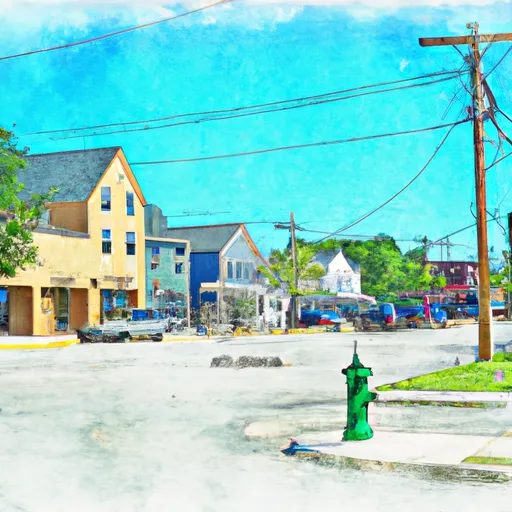-
 Snoflo Premium
Snoflo Premium
Get unlimited access to all our content
With no Ad interruptions! - Start Your Free Trial Login with existing account
Bayport
Eden Index
Climate
6.7
•
Recreation
4.7
•
Community
4.5
•
Safeguard
5.4/10

Bayport is a small city in Washington County, Minnesota, located on the banks of the St. Croix River. The climate in Bayport is characterized by cold winters and warm summers, with an average annual temperature of 45°F. The St. Croix River is a major hydrological feature of the area, with its water quality monitored by the Minnesota Pollution Control Agency. Outdoor recreation opportunities in Bayport include fishing, boating, and hiking along the St. Croix River. The city also has several public parks, including Lakeside Park and Bayport Park, which offer picnic areas, playgrounds, and scenic views of the river.
What is the Eden Index?
The Snoflo Eden Index serves as a comprehensive rating system for regions, evaluating their desirability through a holistic assessment of climate health, outdoor recreation opportunities, and natural disaster risk, acknowledging the profound impact of these factors on livability and well-being.
Climate Health Indicator (CHI): 6.7
Bayport receives approximately
860mm of rain per year,
with humidity levels near 84%
and air temperatures averaging around
8°C.
Bayport has a plant hardyness factor of
4, meaning
plants and agriculture in this region thrive during a short period during spring and early summer. Most
plants will die off during the colder winter months.
By considering the ideal temperature range, reliable water supplies, clean air, and stable seasonal rain or snowpacks, the Climate Health Indicator (CHI) underscores the significance of a healthy climate as the foundation for quality living.
A healthy climate is paramount for ensuring a high quality of life and livability in a region, fostering both physical well-being and environmental harmony. This can be characterized by ideal temperatures, reliable access to water supplies, clean air, and consistent seasonal rain or snowpacks.
Weather Forecast
Streamflow Conditions
St. Croix
Area Rivers
St. Croix
Snowpack Depths
St. Croix
Reservoir Storage Capacity
St. Croix
Groundwater Levels
Recreational Opportunity Index (ROI): 4.7
The Recreational Opportunity Index (ROI) recognizes the value of outdoor recreational options, such as parks, hiking trails, camping sites, and fishing spots, while acknowledging that climate plays a pivotal role in ensuring the comfort and consistency of these experiences.
Access to outdoor recreational opportunities, encompassing activities such as parks, hiking, camping, and fishing, is crucial for overall well-being, and the climate plays a pivotal role in enabling and enhancing these experiences, ensuring that individuals can engage in nature-based activities comfortably and consistently.
Camping Areas
| Campground | Campsites | Reservations | Toilets | Showers | Elevation |
|---|---|---|---|---|---|
| Wallashuck - Red Rock Lake | 80 | 833 ft | |||
| Quercus Wilderness Area | 5 | 670 ft | |||
| North Overlook - Red Rock Lake | 55 | 796 ft | |||
| Eveland Access | 26 | 679 ft | |||
| Miami Lake Park | None | 918 ft | |||
| Cedar Creek Access | None | 704 ft | |||
| Howell Station - Red Rock Lake | 140 | 704 ft | |||
| Lake Wapello State Park | 80 | 803 ft | |||
| Glendale Access | None | 696 ft | |||
| Ivans - Red Rock Lake | None | 708 ft |
Nearby Fishing
Nearby Ski Areas
Catastrophe Safeguard Index (CSI):
The Catastrophe Safeguard Index (CSI) recognizes that natural disaster risk, encompassing floods, fires, hurricanes, and tornadoes, can drastically affect safety and the overall appeal of an area.
The level of natural disaster risk in a region significantly affects safety and the overall livability, with climate change amplifying these risks by potentially increasing the frequency and intensity of events like floods, fires, hurricanes, and tornadoes, thereby posing substantial challenges to community resilience and well-being.
Community Resilience Indicator (CRI): 4.5
The Community Resilience Indicator (CRI) recognizes that education, healthcare, and socioeconomics are crucial to the well-being of a region. The CRI acknowledges the profound impact of these elements on residents' overall quality of life. By evaluating educational resources, healthcare accessibility, and economic inclusivity, the index captures the essential aspects that contribute to a thriving community, fostering resident satisfaction, equity, and social cohesion.

